Phosphorus Deficiency In Cannabis Plants
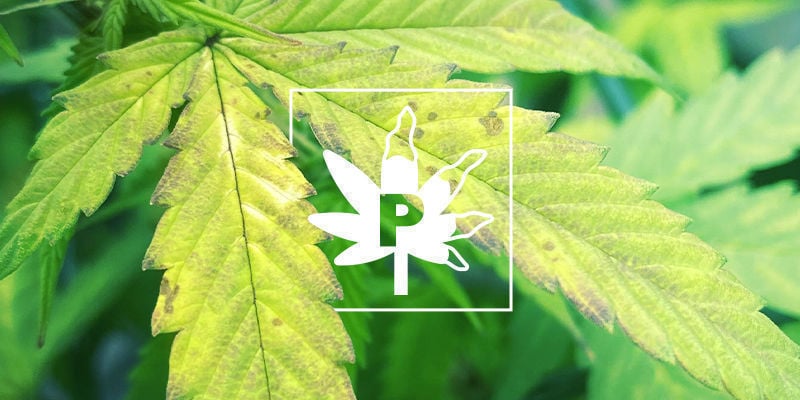
As one of the key cannabis macronutrients, avoiding a phosphorus deficiency is top priority. Here's how to recognise, prevent, and fix a P deficiency in cannabis.
When it comes to cultivating cannabis at home, whether indoors, outdoors, or in a greenhouse, one issue that can plague growers of all levels is nutrient deficiencies. Though not ideal, most deficiencies can be dealt with effectively, so long as you know what to look for. In this article, we delve into the ins and outs of how to recognise, prevent, and treat a cannabis phosphorus deficiency so you can ensure your crop makes it to harvest, happy and healthy.
What causes phosphorus deficiency?
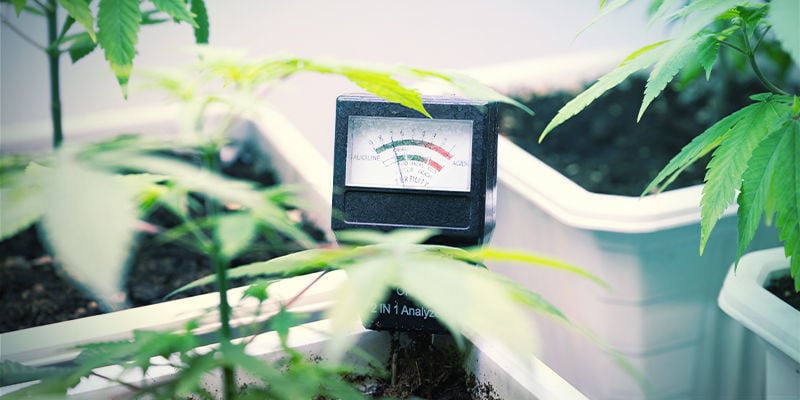
Typically occurring during the flowering stage, a phosphorus (P) deficiency has a few potential causes. Typically, the main culprit is a pH imbalance. The wrong pH level in your soil can cause a cannabis plant to stop taking in nutrients, resulting in a deficiency, even if the nutrient is present in the substrate.
Also, the presence of too much zinc and iron in the soil can cause the plant to fail to uptake P—so striking the right nutrient balance is necessary.
Lastly, as we know, temperature plays a massive role in the health of your cannabis. Plants exposed to conditions that are too cold will not be able to uptake sufficient P, resulting in a deficiency.
How to recognise phosphorus deficiency
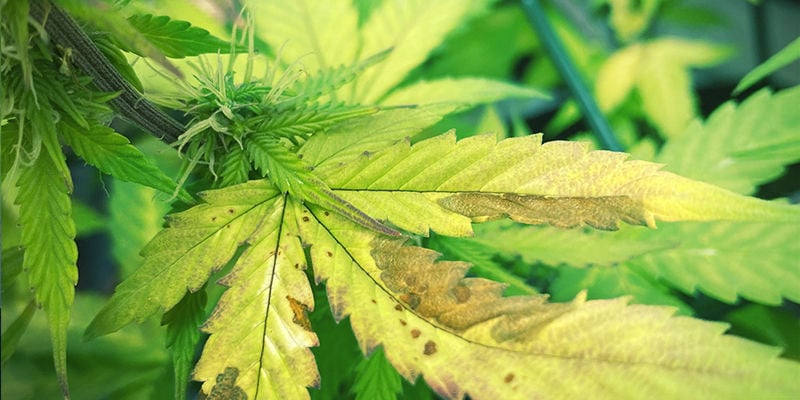
Fortunately, there are a few symptoms that can help you to identify a phosphorus deficiency. As with most plant issues, the first place to observe are the fan leaves.
-
Leaves lacking P will begin to turn a bluish green, as opposed to the vibrant green of healthy plants. Dark copper blotches will also appear near the tips of the leaves, but this is often in more developed cases.
-
Petioles will take on a purple hue, indicating that all is not well.
-
Finally, the vertical growth of your plant will undoubtedly be stunted, and the productivity and overall health of the plant will be significantly impacted.
How to prevent phosphorus deficiency
Although there are several causes of phosphorus deficiency in plants, thankfully, all are preventable. It may take a little trial and error to strike the right balance, especially for newcomers, but taking some extra care before your plant has really begun to flourish will help greatly in the long run.
As pH level is the leading cause of deficiency, it's best to ensure that the levels in your substrate are within the ideal range. In soil, a pH of 6.2–7 is ideal for uptaking phosphorus, and will ensure your plant can access what it needs. To regularly measure the pH of your soil and nutrient solution, purchase a pH meter, which will give you an instant reading.
As high levels of zinc and iron can also cause a phosphorus deficiency, it's best to ensure your fertiliser and substrate provides adequate levels of both nutrients, without going overboard.
In terms of preventing P deficiency resulting from cold temperatures, be sure that the surrounding environment doesn't drop below 15°C. So plan your outdoor growing projects to coincide with the best months for sunlight and warmth, and prep your indoor plants with grow lights and a room that's not too cold.
Progress of cannabis phosphorus deficiency
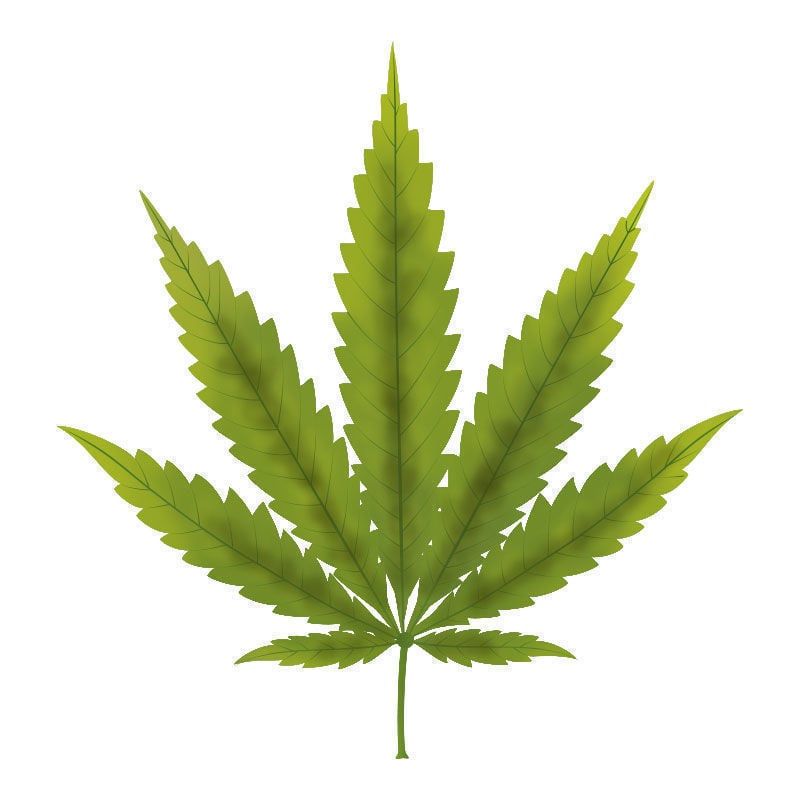
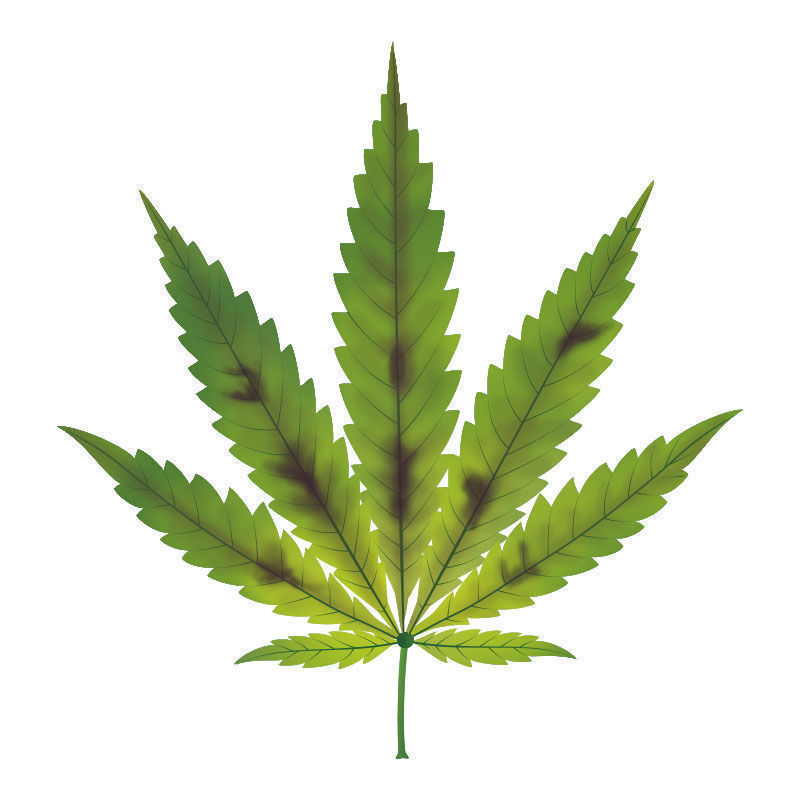
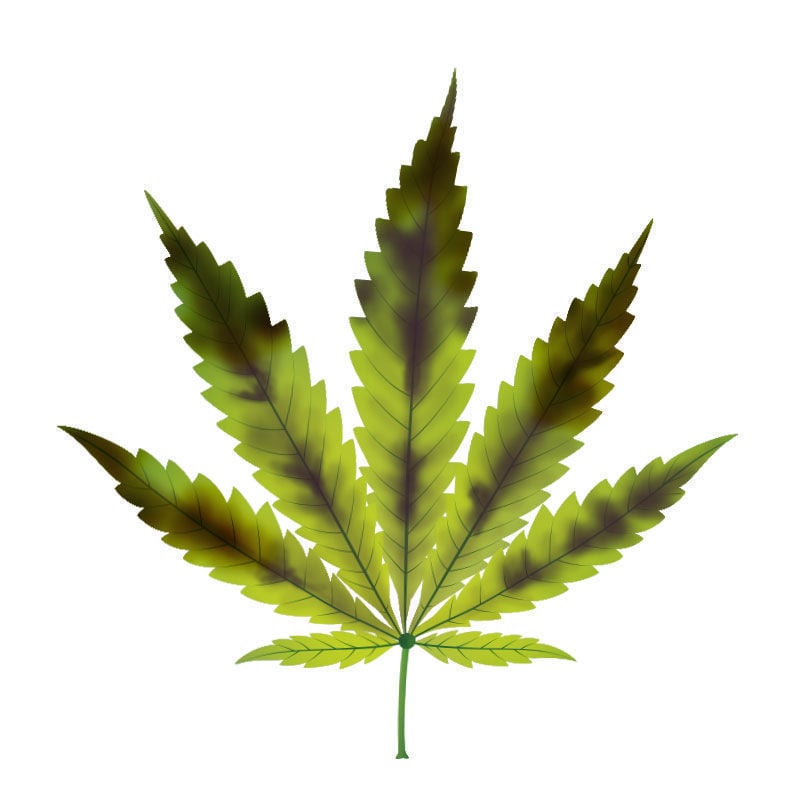
The severity of a phosphorus deficiency will vary from plant to plant, but generally, the following symptoms will arise if a P deficiency is allowed to progress.
Leaves discolour
Bluing of the leaves will be the strongest indicator that your plant has a phosphorus deficiency; they may also take on a slight sheen. As a mobile nutrient, P deficiency will manifest in the older leaves first, and will only worsen over time.
Blotching on leaves
As the symptoms progress, copper blotches on the leaves will form and eventually turn black, and leaves will begin to wither, curl, and eventually drop off. As the plant weakens, it also becomes much more susceptible to diseases and pests, bringing a whole host of new potential problems to your setup.
Stem and petiole discolouration; slow growth
Purple stems and petioles may also rear their head, signalling the plant's rapidly increasing vulnerability. Furthermore, overall plant growth may stall, especially vertical growth.
What phosphorus deficiency looks like in cannabis plants
As mentioned, leaf and stem discolouration are your most significant indication that a plant has a phosphorus deficiency. But while we can describe it to you, it's best to take a look for yourself so you can learn exactly what to keep an eye out for.
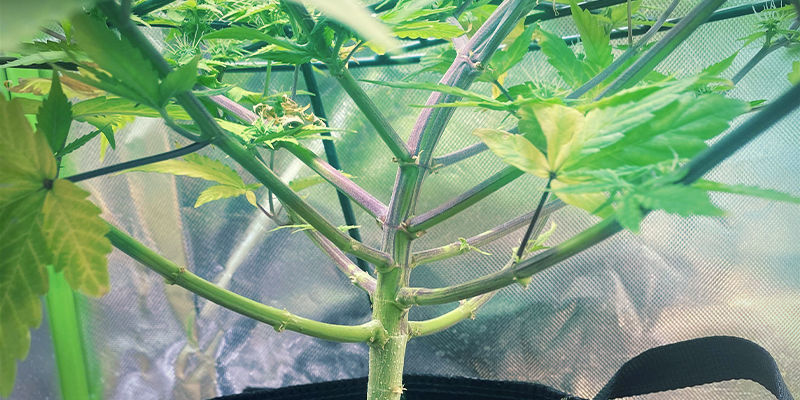
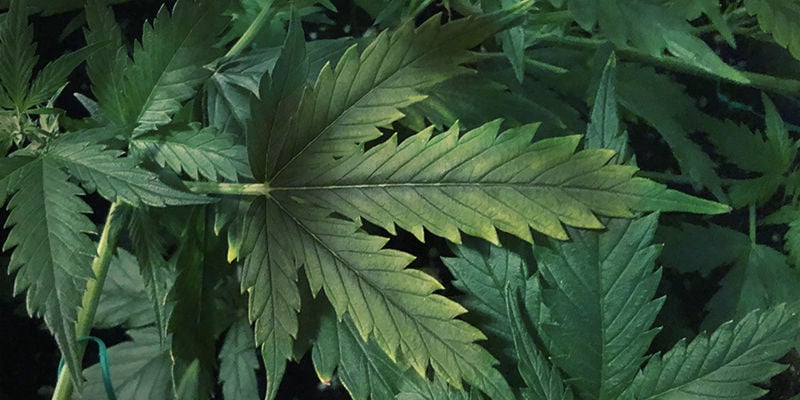
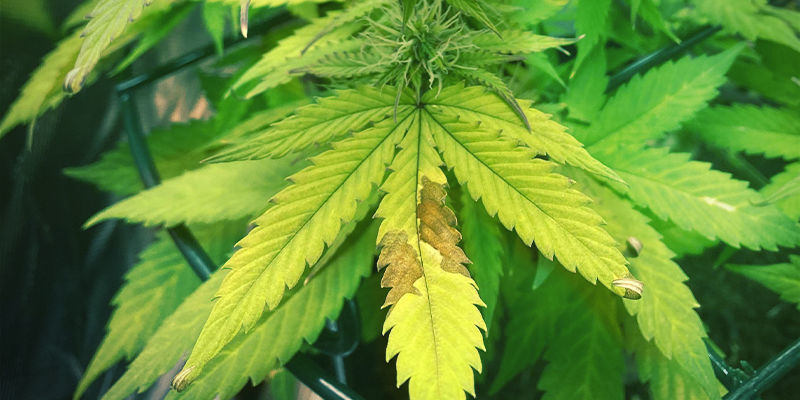
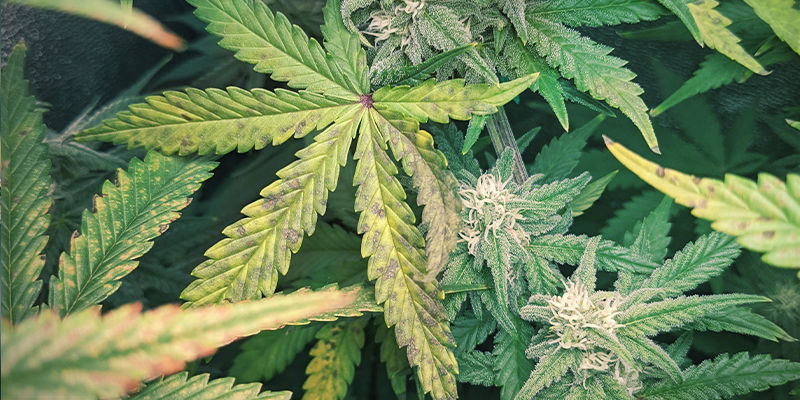
How to treat phosphorus deficiency
We've explained how you can prevent a cannabis phosphorus deficiency, but what can you do if the issue has already set in? Thankfully, all hope is not lost. With just a few simple tricks, you can nurse your plant back to peak condition.
✅ Optimise pH
If the issue has to do with pH, you need to measure and dial in your levels to be satisfactory for phosphorus uptake—6.2–7. Typically, growers use some sort of P-rich fertiliser, such as bone meal, worm castings, or bat guano, to bring the level down to its correct place. However, if the pH level is too low to begin with, opt for a small amount of powdered lime and add it to your soil. This will raise the pH and balance it to the correct standard. Just be sure to test it each time you look to add something new to the mix.
✅ Fix temperature
If the issue is temperature-related, it’s important to rectify the problem quickly, as temps that are too cold, or too hot for that matter, can cause all sorts of plant issues. Cannabis plants like temperatures of 20–30°C during the day and around 16–22°C at night. While these figures are easy enough to dial in indoors, outdoors, you may have to create some sort of structure to insulate your plants, or simply bring them inside at night.
✅ Dial in your feed
In terms of a P deficiency caused or exacerbated by too much zinc or iron, make sure that you’re not overfeeding, and not using a fertiliser with excess amounts of any nutrient. Although cannabis requires more phosphorus during the flowering phase, you always want to err on the side of caution.
Is a phosphorus deficiency really that bad?
Though preventable and reversible, a phosphorus deficiency is a serious issue. This mobile macronutrient plays an especially important role in bud production during the flowering stage, among numerous other biological roles in cannabis plants.
When a lack of phosphorus is present, flowering is often delayed, and when buds do appear, they're often lacking in size and density. Coupled with a greater risk of disease and pest attacks, a P deficiency leaves the plant open to all sorts of threats. So you'll want to take it seriously. Moreover, if breeding, seed yield from your females will also be poor.
Phosphorus: An essential macronutrient
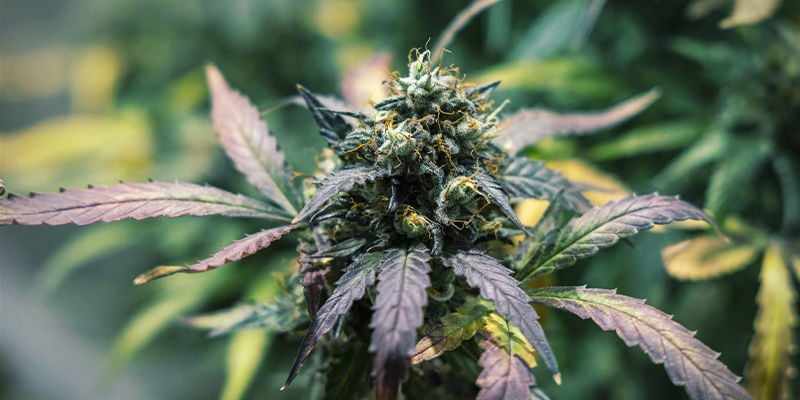
As one of the three macronutrients required by cannabis, phosphorus is undeniably important throughout all stages of growth—but especially during bloom. So a deficiency in the nutrient signals some cause for alarm. However, by optimising the conditions of your grow, regularly testing pH, and keeping an eye out for visual symptoms, you can keep a P deficiency at bay!













 United States
United States










